Are you a Quiet Speculation member?
If not, now is a perfect time to join up! Our powerful tools, breaking-news analysis, and exclusive Discord channel will make sure you stay up to date and ahead of the curve.
For the past two weeks I’ve been in Rome, experiencing the city and all its wonders through a roughly six-week study abroad program for architecture. Among many things, my studies have dealt significantly in history, be it the bloody history of Rome’s oft-changing seat of Caesar or the general majestic forces at work in Rome’s grand churches. This interest, as my personal interests often do, has had an effect on my interests in Magic. Which is my way of saying buckle up, because we’re going to be talking history.
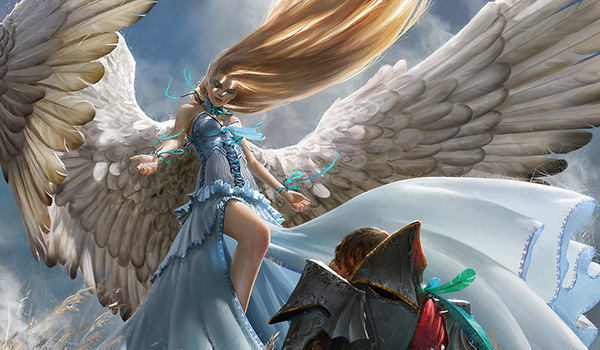
Why Colors?
Concerning real-world historical analysis, it’s often been said that history is "written by the victor." Had the Mongols burned Rome to the ground, angsty 21st century college students would be ignoring an entirely different set of architectural wonders, and tourist mothers would be shielding their tourist children's eyes from statues of beheadings rather than male genitalia. In Magic, this concept carries over as well. Pro Tour Return to Ravnica was won by Eggs. Can you name another storyline from that event? You get my point. So, instead of discussing the history of Modern the “normal” way, by framing the discussion around top decks and influential bannings, instead I would like to take a different approach, by looking at the impact each of Magic’s five colors have had upon the game.
This approach carries with it a few benefits. Analyzing a color’s various identities and influences in the format will come in the form of lists, which will serve as a useful reference for deckbuilding. In a format defined as much by mana constraints as it is by safety valves, determining the strengths and weaknesses of a specific color can be quite influential in archetypal decisions. Also, while the vast card pool available will undoubtedly result in “bleeding” of what a color is capable of, this analysis will show what each color does well, and more importantly, poorly. Just because white has Path to Exile doesn’t necessarily make it the king of removal. And with that, we begin.
[wp_ad_camp_1]
The Cards
Staples
- Path to Exile
- Lingering Souls
Sideboard Powerhouses
- Leyline of Sanctity
- Rest in Peace
- Stony Silence
Strong Options
- Elspeth, Knight-Errant
- Restoration Angel
- Kitchen Finks
- Wall of Omens
- Soul's Attendant
- Leonin Arbiter
- Flickerwisp
- Spectral Procession
- Intangible Virtue
Role Players
- Angel's Grace
White’s color identity in Modern is so intriguing because its power is amazingly disproportionate related to its scope. By that, I mean the amount of influence white has in the format should translate to a breadth of powerful spells, but it doesn’t. 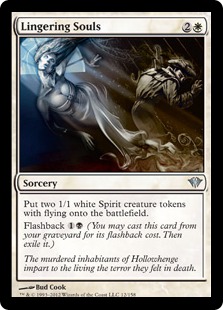 Take a look at the format staples. Path to Exile is undoubtedly the gold standard when it comes to removal, but beyond that, that’s it. Lingering Souls is an excellent spell, and the best possible rate, but requires black to be fully effective, so it’s unfair to call it a “white card” completely.
Take a look at the format staples. Path to Exile is undoubtedly the gold standard when it comes to removal, but beyond that, that’s it. Lingering Souls is an excellent spell, and the best possible rate, but requires black to be fully effective, so it’s unfair to call it a “white card” completely.
As anyone familiar with Modern knows, the strength of white in the format comes from its sideboard. Stony Silence is the single best answer to one of the best archetypes in the format (Affinity) and Leyline of Sanctity and Rest in Peace are both the strongest options for fighting Burn/Discard and graveyard strategies respectively. All of this should be well-covered territory by now, but these characteristics exhibit an interesting underlying trait: white is powerful, but mainly in a supporting role.
Support via Disruption
White contains few truly powerful threats. At the top of the curve you have things like Gideon Jura, Elspeth, Knight-Errant, or Elspeth, Sun's Champion. But those see little play, lacking the raw efficiency of staples like Tarmogoyf or Liliana of the Veil. White also contains no powerful card advantage-generating effects outside of multi-color options like Sphinx's Revelation or Lingering Souls. No Dark Confidant or Snapcaster Mage.
Instead, what white offers is excellent disruptive elements: the best, most high-impact sideboard spells for fighting specific matchups, and Path to Exile. In a support role, white’s lack of strong staple creatures or card advantage spells no longer becomes a weakness, as it can fulfill its role by playing to its strengths while pairing with other colors to overcome its weaknesses.
Let’s take a quick look at some lists that incorporate white as a support color in this way.
Junk, by Arya Roohi (21st, SCG Milwaukee)
Here, we see a base black-green archetype that provides power through the strong, individually high-impact spells like Tarmogoyf, Dark Confidant, and Liliana of the Veil. White plays a support role, offering Path to Exile (and Lingering Souls/Siege Rhino) in the maindeck, and powerful silver bullets out of the sideboard. If we’re evaluating colors on share of the workload, white clearly underperforms, contributing around eight spells to black’s 14+ and green’s 10+ (and we could easily count Noble Hierarch and Tarmogoyf as 1.5 if we wanted to, as they truly are “that good”).
Jeskai Control, by William Craddock (1st, SCG Super IQ)
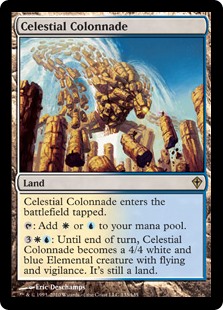 Here again white plays a support role, contributing Path to Exile and sideboard spells primarily, but also helping to cast Nahiri, the Harbinger and activate Celestial Colonnade. It is easy to see white play a support role to blue, with format powerhouses like Snapcaster Mage, Ancestral Vision, and counterspells doing much of the work. In this archetype, red might be pulling the least weight, as it really only offers Lightning Bolt (as a less universal Path to Exile) and again access to Nahiri, the Harbinger. Red’s sideboard options are also strong (Blood Moon should we build for it, Vandalblast, and Anger of the Gods) but are overshadowed by white’s and can often be replaced.
Here again white plays a support role, contributing Path to Exile and sideboard spells primarily, but also helping to cast Nahiri, the Harbinger and activate Celestial Colonnade. It is easy to see white play a support role to blue, with format powerhouses like Snapcaster Mage, Ancestral Vision, and counterspells doing much of the work. In this archetype, red might be pulling the least weight, as it really only offers Lightning Bolt (as a less universal Path to Exile) and again access to Nahiri, the Harbinger. Red’s sideboard options are also strong (Blood Moon should we build for it, Vandalblast, and Anger of the Gods) but are overshadowed by white’s and can often be replaced.
The Case of Death and Taxes
If the most prominent and successful white strategies use the color in this support role, that doesn't necessarily mean white can't form the core of an archetype. If our hypothesis is that white is poor in this latter role, we need to examine some white-based archetypes to compare their performance to that of the ones above.
Death and Taxes, by Gregory Matthews (20th, SCG Indy)
Death and Taxes includes the ever-present mainstays of Path to Exile and Stony Silence, but also incorporates less prevalent white options not seen in other archetypes. Of these, Leonin Arbiter and Restoration Angel lead the pack as the “best of the rest,” but much of their power comes from synergy rather than individual strength. 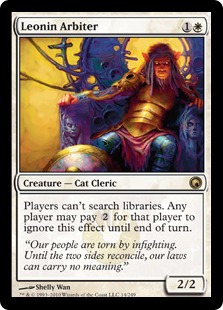 When comparing heads up, Leonin Arbiter doesn’t hold a candle to Dark Confidant or Tarmogoyf, yet when supported by Ghost Quarter and Aether Vial to power out other threats, Leonin Arbiter’s strength grows considerably. Restoration Angel is clunky as a 3/4 flier for 4 but excels when doubling up on enters-the-battlefield effects or saving one of your lock pieces from death.
When comparing heads up, Leonin Arbiter doesn’t hold a candle to Dark Confidant or Tarmogoyf, yet when supported by Ghost Quarter and Aether Vial to power out other threats, Leonin Arbiter’s strength grows considerably. Restoration Angel is clunky as a 3/4 flier for 4 but excels when doubling up on enters-the-battlefield effects or saving one of your lock pieces from death.
Death and Taxes has been a mainstay in Modern for some time now, and some conclusions about it can safely be drawn. While the archetype is enjoying Tier 2 popularity at the moment, this is a relatively recent development. Traditionally it has waxed and waned continuously in Modern without ever really being considered a serious contender.
In my personal experience, Death and Taxes exhibits some inherent weaknesses that are hard to overcome. It is soft to hand disruption and struggles to recover from resource deficits or unexpected angles of attack. A simple Liliana of the Veil can send them reeling. Tarmogoyf outclasses all of white's creatures by itself, requiring a timely Path to Exile for them to break through. A few removal spells on key creatures can leave it topdecking extra lands and useless Aether Vials with no way to recover lost card advantage. Control strategies in particular can be extremely hard to combat. 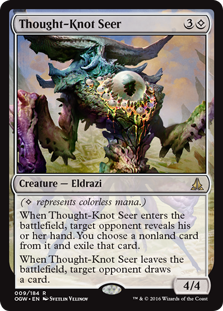 Their plentiful removal and card advantage, along with a naturally higher land count, fights Death and Taxes' disruptive elements on all fronts.
Their plentiful removal and card advantage, along with a naturally higher land count, fights Death and Taxes' disruptive elements on all fronts.
The newfound success of Death and Taxes is likely a function of the introduction of the Eldrazi to the format, which have shown their ability to define and revitalize archetypes from Standard to Legacy. In many ways the iconic colorless tribe acts as a kind of sixth color, and we can see how it augments white's core disruption package. In Thought-Knot Seer and Reality Smasher, D&T finally gets access to some significant bodies. These allow it to address the Goyf-as-Moat problem and capitalize on its disruptive elements by closing games quickly before opponents topdeck out of the bind. It also acquires a powerful interactive element in Eldrazi Displacer, which contributes to the disruption plan while boasting flexibility the other "hate bears" can't.
More than anything else, the takeaway for me regarding Death and Taxes is that it clearly demonstrates white's ability to function as a disruptive element, but suffers from an overall lower power level compared to other established archetypes. This may be changing now that it has elected to "splash" colorless mana.
Let's look at one more white-based archetype.
Soul Sisters, by Rvng (5-0, Modern League)
Without question, white excels in the area of lifegain, enough to support a whole archetype dedicated to the strategy. Besides disruption, this is white's one great skill---the unfortunate fact being that lifegain just isn’t a good strategy. Ad Nauseam doesn’t care. 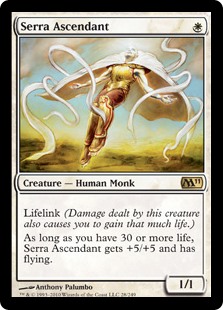 Infect doesn’t care. Jund destroys the deck. Affinity is too fast if they don’t have Stony Silence.
Infect doesn’t care. Jund destroys the deck. Affinity is too fast if they don’t have Stony Silence.
The very fact that the white-based decks resort to lifegain or "tricky" effects in Death and Taxes shows the color's weaknesses. Its main strengths are its disruptive elements, which take many forms: answers to aggro and creature-combo in Path to Exile, knock-out bullets out of the sideboard like Leyline and Rest in Peace, hate bears that stymie mana development like Arbiter and Thalia. What all these cards share in common is their ability to put an opponent off balance---but they lack the raw power and game-winning potential of the Goyf's, Snapcasters, Bobs, and Goblin Guides of the multiverse.
Thus white typically takes on the support role, providing backup and disruption to the other colors while they execute their core strategies. In Death and Taxes, white has endeavored to form a "mono-disruption" archetype on the model of old-school prison decks, but it seems to have struggled until the arrival of the colorless-matters Eldrazi gave it additional tools.
The Takeaways
So, to recap, bullet point style.
- White's core contribution to Modern are its disruptive elements, which usually appear in a support role.
- White has Path to Exile, easily the most versatile unconditional removal spell in the format, sharing with Lightning Bolt the status for best removal spell in Modern.
- White has access to some of the strongest sideboard spells in the format, namely Stony Silence, Rest in Peace, and Leyline of Sanctity.
- White suffers from a lack of depth when it comes to general, powerful threats based on rate alone.
- White has no general ways to accumulate card advantage, be it actual (Snapcaster Mage, Dark Confidant) or virtual (Tarmogoyf).
Multicolor spells that include white are plentiful in Modern, and offer various effects for a solid rate. The best of these include:
- Lingering Souls
- Siege Rhino
- Tidehollow Sculler
- Nahiri, the Harbinger
- Sphinx's Revelation
- Celestial Colonnade
- Voice of Resurgence
- Qasali Pridemage
Pairing white with every other color gives access to multiple stronger options, with the red-white pairing being the weakest. While outside the scope of this article, this hints at one of the reasons why Mardu has traditionally underperformed in Modern while Abzan has fared much better. This could, however, be more accurately attributed to the favorable heads-up fight between Tarmogoyf and Lightning Bolt.
White-green offers some of the strongest incentives, with Voice of Resurgence and Qasali Pridemage seeing abundant play in Company lists of both Naya and Abzan varieties.
Conclusion
For white to truly become a strong contender for stand-alone power in Modern, it requires either a build-around-me card like Balance, or a pushed format staple like Stoneforge Mystic. As long as it lacks a strong creature, white will always be relegated to a support role and paired with other archetypes that can provide such spells to overcome its inherent weaknesses.
Pairing white with blue naturally overcomes its difficulties associated with card advantage, while pairing white with green or "colorless" gives it much-needed big creatures and aggressive elements. Until then, may white players continue to Path creatures to their hearts' content, and may Affinity always cower in fear.
Thanks for reading, and I'll see you next week when we cover blue!
Trevor Holmes
The_Architect on MTGO
Twitch.tv/Architect_Gaming
Twitter.com/7he4rchitect





I really like the concept of this article, and it highlights the problem white has (for the most part) always had in Modern. Its “shticks” are great in the support role, but mediocre in the main. Maybe this will prompt Wizards to actually do something about it – the fact that “white weenie” aggro is such a part of set design, but so weak as a Competitive Constructed strategy is particularly disappointing. So good job on that.
I do have some quibbles in addition to the praise, which I’ll annotate here:
1. No mention of the supporting role white plays in Abzan Company? I find that odd, given that it’s arguably the most powerful deck containing white in the meta. Kiki Chord is also in a similar vein, though that one has less white in it (mostly just Path, Wall of Omens, and Resto).
2. If Leonin Arbiter makes your list of “Strong Options” (and it deserves to be there), so should Thalia. A 2-power first strike creature with a useful ability is deceptively powerful (though obviously not the roadblock she can be in Legacy).
3. I know that Tokens’ competitive record is checkered at best, but if you’re going to talk about Soul Sisters (which is by and large a lousy deck, no offense to Sisters enthusiasts), Tokens should at least get a shout-out, since you can actually beat people with it. You even mentioned Intangible Virtue and Spectral Procession in your list of Strong Options.
4. I’d add Lightning Helix, Orzhov Pontiff, and Zealous Persecution (all of which can be a beating against aggro) to your list of useful multicolored cards, as well as the Stirring Wildwood manland (which is perennially underrated). I’d also consider Shambling Vent (it does see play).
5. You’ve done a good job highlighting the weaknesses of white – now, what can be done to address them? I would say that better evasion for the aggressive creatures would be a good place to start.
Personally I think a 2/1 flash for 2 that flickers like flicker wisp way (but probably no land) would help allow a lot of fringey white tactics to open up without completely crushing standard
Whites proactive and core strategies fall by the wayside in modern because white weenies is somewhat oppressive in standard situations and the enchantment aspect of white is too hard to interact with to allow extremely powerful cards with it
Roland,
Good suggestions! Definitely missed a couple options on the first pass, wasn’t my intention to have the list be exhaustive but those spells should definitely be in there. Will keep your points in mind for next week!
This is a great article, Trevor, and I’m looking forward to reading the rest of this series. I’d like to second the above commenter’s “quibbles” with the article. The cards and archetypes mentioned are either often played contenders for slots in Modern decks or play styles deserving of mention.
I’d like to add that white also had a brief moment in the Eldrazi Winter sun with an enchantment prison deck that also sported the combination of Squadron Hawk and Sunscour. While no such deck (except perhaps the derivative Troll Worship) has persisted out of the winter warping, I would argue there is territory in Modern to be developed, possibly with the right new card to bring things all together.
Chris,
Great points, I’ve always felt that White lacked a marquee creature to truly turn it into a powerful force in Modern, but White’s role is more than powerful enough as it is and the printing of such a card would probably push it over the top.
Trevor, I respect your opinions. I will say that you are very, very far off in your analysis of the Soul Sisters deck (as far as matchups are concerned). You are certainly correct that white is best as a support color. There is no denying you are correct. As a longtime Soul Sisters pilot, I would suggest that there is a lot of card advantage/value built into the deck. Sure, it does not have the best “card draw,” but there are several variations of the deck that utilize fetches and a black splash for Lingering Souls… and Windbrisk Heights is hugely underestimated. I typically expect a judge to be called over if I play against someone who has never seen it… and I activate it.
Ad Nauseam most certainly DOES care about Soul Sisters. There is a card in the deck called Martyr of Sands. I have not lost to Ad Naus in a very long time. Game 2? Leyline of Sanctity. Sundering Growth. Ad Naus suffers because it cannot interact. Usually a very fast match.
Infect? Sisters is 60/40. Unless everyone who plays with Infect against me is just SO BAD with the deck, or I am incredibly lucky. A lot of folks in the Sisters Salvation forum have reported very favorable results against the deck.
Jund. Game one is a wash. Games 2 and 3 depend on how the Jund player sideboards. I have been very successful against Jund, and don’t worry about that match too much. Maybe because of Lingering Souls? From experience, a lot of Jund players get a bit upset when their Goyf gets out-valued and Liliana is useless… a lot of Jund players have a hard time letting go of her against Sisters and keep her in.
Scapeshift. More like 70/30 Sisters
Affinity. The deck is not too fast for Sisters. On the contrary. Affinity exhausts its resources rather quickly against a deck that can extend the game. Affinity has to have the “god draw” in order to win the first game. Sorry, it just does. The match against Affinity, especially game one, feels like Sisters vs. Burn… a match that a lot of people think is a foregone conclusion for Sisters. Not the case, however… although it’s very favorable.
Some Merfolk players suggest their match against Sisters isn’t very good, but I think it’s a coin flip.
Abzan Company. This one is admittedly skewed in favor of Abzan, even after the sideboard. You would think Auriok Champion and a few sisters just shut the deck down. Nope.
Control decks are hard to beat. Tron is almost an auto-loss. Griselbrand, too. Lantern Control is close but usually the Lantern player wins. Sisters had game against Eldrazi. Grixis decks? Attrition games, and it depends on whether or not Grixis is using Young Pyromancer. If they are, game one is typically a Sisters win. If they don’t, and they use the Kalitas/Sweep combo, it’s hard to recover. Abzan decks that are not using CoCo? No problem.
The deck is not flashy, but folks who have never played with the deck themselves or have never played many of the matches we’ve talked about have very little idea how the Sisters deck actually works. It will never be a tier one deck, and it was actually better when Twin was around (game two with Mark of Asylum = sheer befuddlement). If a lot of matches are coin flips, then the deck certainly can’t be considered a “strong” deck, and I get that. I simply wanted to point out that the deck has far better chances against some of the matches that you had listed.
I have to say, having piloted Sisters once as a flight of fancy, that I disagree with a lot of your matchup opinions, the one on Infect in particular. They attack you on an axis you’re mostly unprepared to defend against (to be fair, most decks aren’t), and while the hands where you slam down a Spectral Procession and make their Inkmoth Nexus look silly do happen, any time they play a Blighted Agent that’s not summarily answered or an Inkmoth when all you’re rocking is ground forces is one you might as well tip the cap on and try to beat them next time.
I’m also astounded that you’re not describing the Jund player siding in sweepers postboard, as that’s their go-to strategy against any creature deck (and Anger of the Gods replaces Lili nicely on the curve). If your protection is Mark of Asylum, the counter is twofold – they can blow it up, or they can strip it from your hand before it’s even cast. Merfolk deals chunk damage and can secure global evasion for their team (which is much, much bigger than the Sisters’ on many occasions), plus they can bounce away the likes of Ajani’s Pridemate if it gets too big. I don’t know how that matchup can be framed in any terms other than favorable. Gaining 2-3 life when creatures come in doesn’t feel that relevant when you’re getting slammed for 10+.
I also think you’re a bit hard on the deck in other matchups. Griselbrand may be tough G1, but G2 with Rest in Peace coming in? Doesn’t feel that bad. And doesn’t the very same Stony Silence you bring in against Affinity help you out a ton against Tron (that said, it won’t save you from Pyroclasm)? Overall, though, the deck didn’t strike me as particularly good (requires the time to go through its slow-grow synergy game, which not every deck will afford you), and the results bear that out.